GILI ISLANDS - LOMBOK

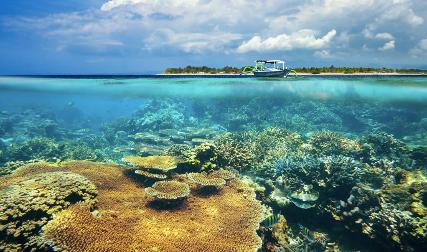
DIVING THE GILI ISLANDS
Arcing away from the northwest corner of Lombok, the Gili Islands are three idyllic atolls where the sand is still powdery white, the water a clear sparkling turquoise, and the sunsets over Bali’s Agung in the west simply spectacular.
As one of Indonesia’s top areas for scuba diving and snorkelling, with a reputation for being the ‘turtle capital of the world’, with year round water temperatures about 28 degrees Celsius, the Gili islands have become popular for beginners and experienced divers alike. There are about 25 dive sites around the islands of Trawangan, Meno and Gili Air, with a variety of topography (slopes, walls, ridges and canyons) and an enormous amount of diverse marine life. This includes black – and white tip reef sharks, lots of turtles (hawksbill and olive ridley), lionfish, scorpion fish, cuttlefish and octopus, moray eels, sea snakes, different types of rays (blue – spotted, eagle and from December to March - manta rays) not to mention schools of bump – head parrot fish every full moon and the occasional whale shark…plus countless varieties of hard and soft corals.
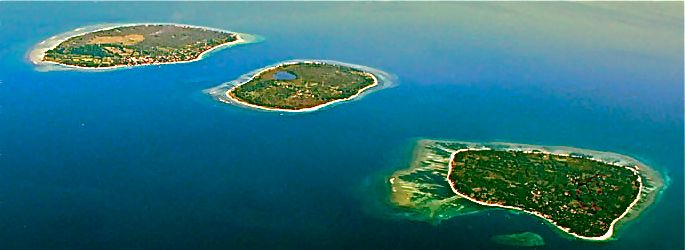
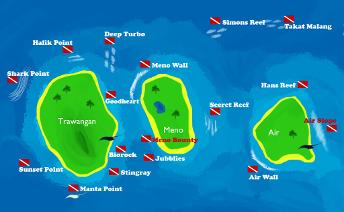
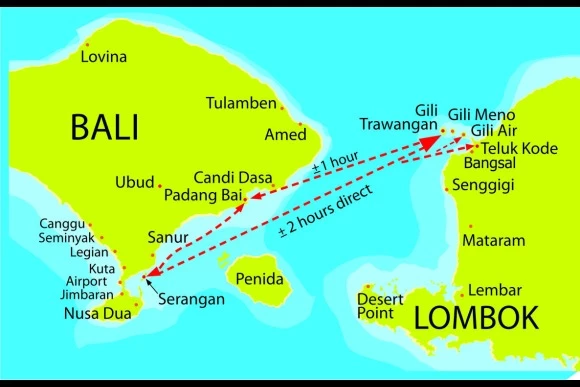
Home to the largest Irish bar on the smallest island in the world, an authentic Japanese sushi restaurant, a turtle hatchery, ominous sounding dive sites like ‘Shark Point’ and miles and miles of white sandy beaches, Lombok’s Gilis, make a surprisingly ideal getaway destination. Getting there is easy and whichever way you chose, you will be guaranteed to see some of Bali and Lombok’s breathtaking scenery.
No motorised transport - Fortunately all three Gili Islands will not permit any type of motorised transport on them and therefore rely on bicycles or horse and carts, locally known as ‘Cidomos’. Bicycles can be rented from any of the kiosks and cost from around Rp20,000 an hour, or better value, ask for the daily rate. Cidomos (local horse and carts) are easily located all over the islands but tend to hang around the harbour and busy spots, arrangements can be made if you are staying in a more remote place on the island, for instance a late ride home…. Haggling is the norm, and always agree a price before your journey.
Although originally discovered by backpackers in the mid eighties, and with a reputation as a party destination, the Gilis now boasts themselves as a great destination suitable for families of all ages. Various new hotels, luxury villas, and boutique bungalows now cater for children and offer good value, some have babysitting services, and with lots of activities on the islands families are sure to enjoy their holidays to the full.
Accommodation choices start from beach shacks, backpacker beach huts and budget hotels, a large selection of mid range hotels, boutique bungalows, through to 5 star resort style hotels and luxury private villas on all three Gili Islands of Trawangan, Meno and Air.
Shark Point: An excellent site for viewing larger marine life on the north side of Gili Trawangan. A flat sandy bottom turns into a series of progressively deeper canyons that run parallel to the shore. This is probably the most popular site because of the sheer variety of life seen here on a single dive. Reef sharks are found basking in the canyons, cuttlefish, stingrays, tons of turtles in the shallows, and every full moon it is a favourite hang out for a school of huge bumphead parrot fish. Large rays sometimes pass by as well as schooling trevally.
Manta Point: A gently sloping reef on the south side of Gili Trawangan with a good variety of hard and soft corals, interspersed with bommies and large table corals which shelter the fish. There is rarely any current here, an excellent site to get close up with reef sharks, stingrays, cuttlefish, octopus and in season a passing manta!!
Halik: A steep slope on the north side of Gili Trawangan, from 5m down to 24m with a series of gullies at the bottom. A fine site to multi level dive, the selection of soft coral in the deeper section gives way to hard corals as you ascend and in the shallows there are always several turtles totally unfazed by the presence of divers. This is also a great site for drift dives.
Deep Turbo´s: A great deep dive just off the east of Gili Trawangan with spectacular topography. At 30m this site has a sandy bottom between large sea mounds. These sea mounds range in size and have an interesting variety of overhangs and outcrops, the largest of which go up to about 20m depth. You'll find a good variety of corals and some huge sea fans. Thousands of garden eels cover the sandy bottom and barracuda, leopard sharks and giant rays can also be seen here.
Hann´s Reef: Muck diving. This site is just off the east of Gili Air and it provides a great opportunity for macro photographers or those who wish to witness some of the smaller, stranger creatures found here. Frog fish, leaf scorpion fish, sea horses, black spotted morays, pipefish and many types of shrimp are frequently spotted here.
Simon´s Reef: A great deep dive that offers a variety of corals not seen on the other dive sites. At 30m this site has a sandy bottom between large sea mounds. These sea mounds range in size and have an interesting variety of overhangs and outcrops, there are also some interesting sand bar formations similar to sand dunes in a desert. The dive ends on a pinnacle that's covered in fish life.
Stingray: A gentle slope just off the east of Gili Trawangan that gets its name from the huge rays that can be seen here. A good muck dive, this is our house reef and was the recent location of a Bio Rock project. We put in a total of 8 artificial reefs that have attracted a variety of marine life.
Meno Bounty: A 30m long sunken platform on the south west side of Meno, covered in hard and soft corals. The bounty is a haven for many types of fish such as Scorpion fish, Stone fish and Juvenile Batfish. Large schools of drummer fish are often seen here.
Japanese Wreck: Experienced divers only. This dive requires Nitrox certification and experience of decompression dives. The wreck is a Japanese Patrol boat from World War II, it's about 20m long and is sitting upright on a sandy bottom at 45m. The wreck is covered in scorpionfish and lionfish, there's a huge frogfish, nudibranchs and much more
Meno Wall: Just off the west of Gili Meno and home to a plethora of crustaceans and a great spot for night diving. The wall runs from 5m down to 16m and a second wall runs a little deeper. Spanish dancers, crabs ranging from small coral crabs up to the huge sponge crab, lobsters, shrimps, sleeping turtles, baby cuttlefish and scorpion fish are amongst the many creatures that can be seen.
Mirkos: (Secret Reef) On the east of Meno you can find this long sea mound, which stretches almost the whole length of the island. A beautiful deep dive, famous for the beautiful coral, where you can find lots of cool small stuff like Glass Shrimps and Porcelain Crabs.
Air Wall: As the name suggests this wall is one of the largest in the area, with a completely vertical drop from 5-30 meters running along part of the Eastern side of Gil Air. The dive starts with a gentle sandy bottom slope past some great bommies and ridges where the Bump Head Parrot fish like to hang out, progressing on to the wall itself where many macro species plus a great variety of the more unusual marine life can be found.








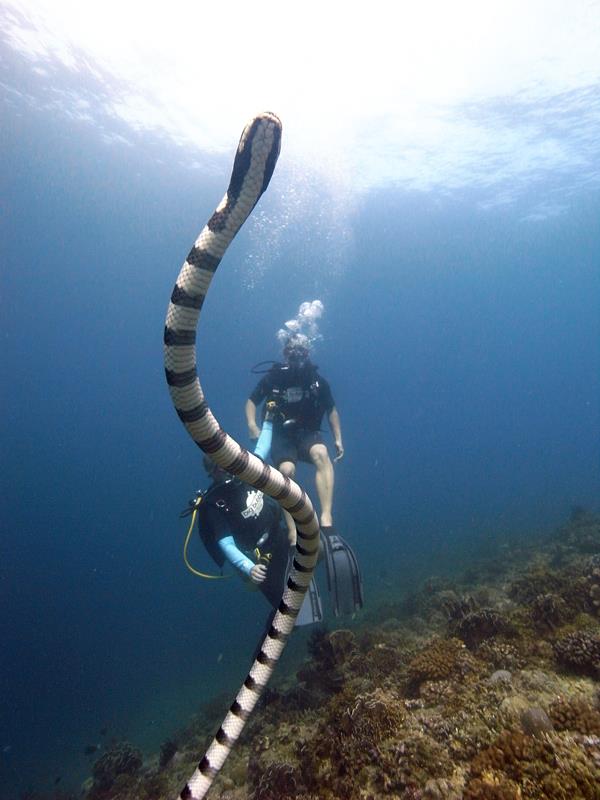
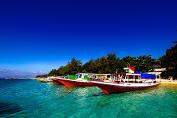

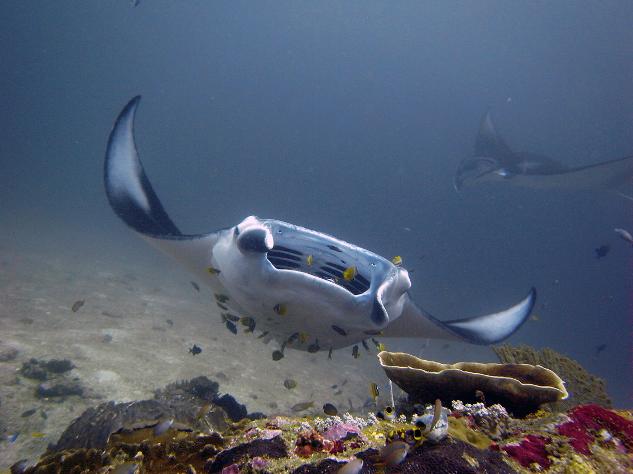
Swimming and Snorkeling
The best places for snorkeling and swimming are along the main beach areas. Masks, fins and snorkels can be rented by the hour or day, from any of the 7 PADI and SSI dive centers or the kiosks in the street. Glass bottom boat trips around the three Gili islands are available and cost around 150,000rp per person. You can see all types of marine life just by snorkeling including many fishes and corals and of course lots of turtles, but please be careful not to touch the coral.
Money matters
There is now an ATM machine at Hotel Villa Ombak on Gili Trawangan open 24 hours, all the dive centers and bigger hotels accept Visa and MasterCard credit cards with an additional 3% bank charge, cash advances at 10% are available in many places. Money changers will cash traveler’s checks and currency but at a much lower reduced rate than on the mainland.
Electricity
All three Gilis islands do now have their own PLN electric generating stations and in theory should have power 24 hours a day, however in the peak seasons this can be put under strain particularly late afternoon and early evening. A large number of businesses now have their own generators such as the larger hotels and restaurants so as to avoid the problem, and usually power cuts or ‘mati lampu’ only last a few hours, although sometimes can last up to a few days.
Communication
There are a number of internet cafes on Gili Trawangan, Gili Meno and Gili air all charging approximately the same, (around Rp500 per minute) although all operate at different speeds. For telephone calls the best place to use is the shops called Wartel, located next to the art market on Trawangan, at the Ozzy shop on Meno, and behind Villa Karang on Gili Air.
Crime, safety and health
Generally there is very little crime on the Gili islands, however no where is 100% free of petty crime. As with any where in the world you travel its best to leave your valuables in your room, and ideally in your hotel safe. If you do have any problems on the island report them to the Head of the Island (Kepala Desa) at the Satgas office, located opposite the Harbour. There is a new 24 hours clinic at Hotel Vila Ombak on Gili Trawangan that has a doctor and nurse on call that can deal with minor injuries and problems, and can also dispense certain prescription drugs.
Water
Most businesses rely on well water for showers and bathrooms, some places are now importing fresh water from the mainland Lombok. Some hotels have the option of fresh water mandi after a well water shower. All fresh water is brought to the islands by small fishing boats from Lombok – in the unlikely event the water cannot timeously be delivered guests will need to use the well water. The delays can be due to the tides being to low and the delivery boat not being able to get over the reef or the seas being too rough.
If your holiday is planned and it is to revolve around fresh water & power please do not think about making a booking on any of the 3 islands as services are not guaranteed…the Gili islands are very much grass roots with really very little development……this just will not be your type of holiday…embrace simplicity as there are few places in this world that are easy to access, but where you can still have a remote experience.
THE WALLACE LINE
Sir Alfred Russel Wallace, the so-called father of animal geography, formulated his ideas on evolution by natural selection while observing and collecting wildlife in the islands of Southeast Asia. He was particularly impressed by the sudden difference in bird families he encountered when he sailed only twenty miles east of the island of Bali and landed on Lombok.
On Bali the birds were clearly related to those of the larger islands of Java and Sumatra and mainland Malaysia. On Lombok the birds were clearly related to those of New Guinea and Australia. He marked the channel between Bali and Lombok as the divide between two great zoogeographic regions, the Oriental and Australian.
In his honor this dividing line, which extends northwards between the islands of Borneo and Sulawesi, is still referred to today as Wallace’s Line.